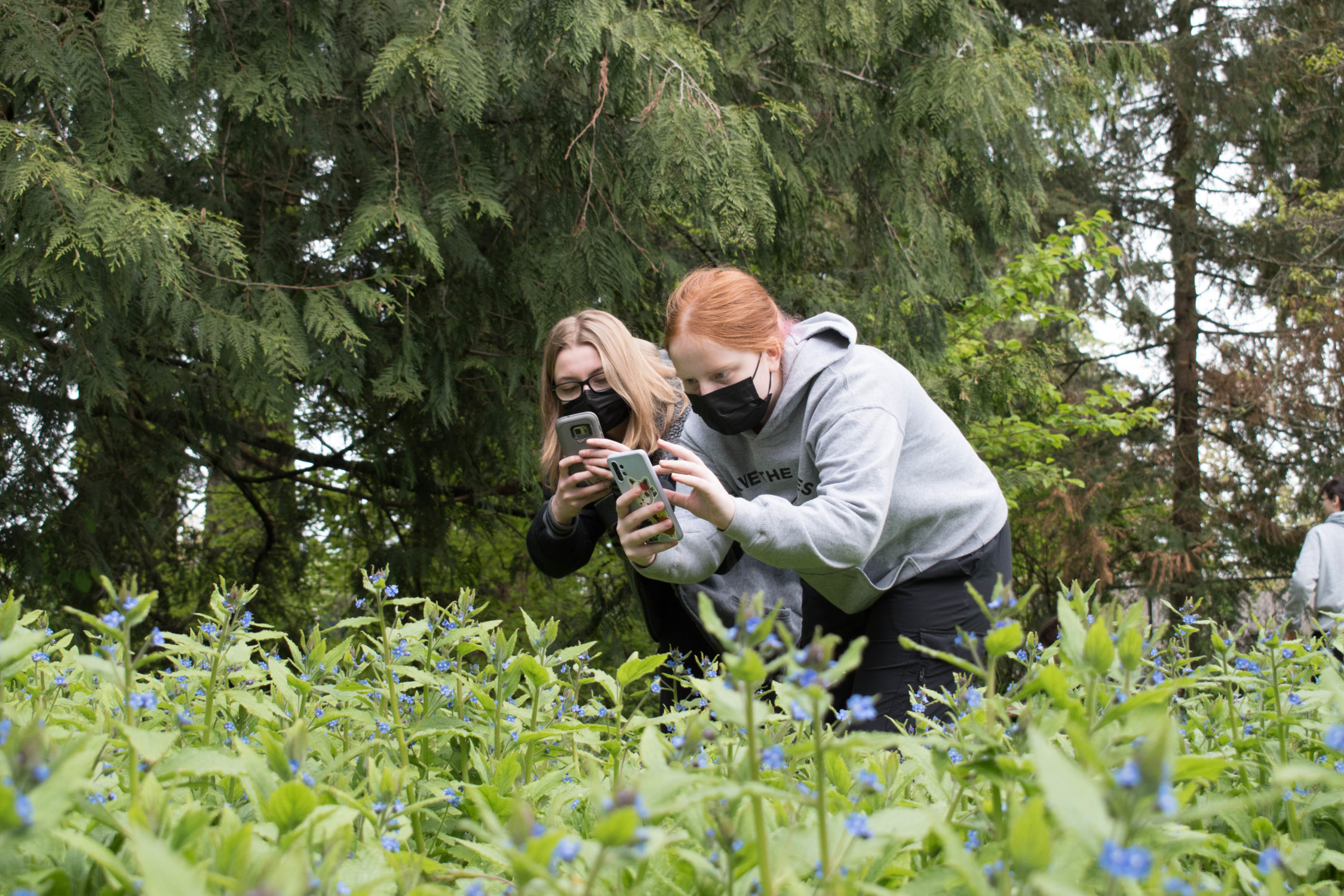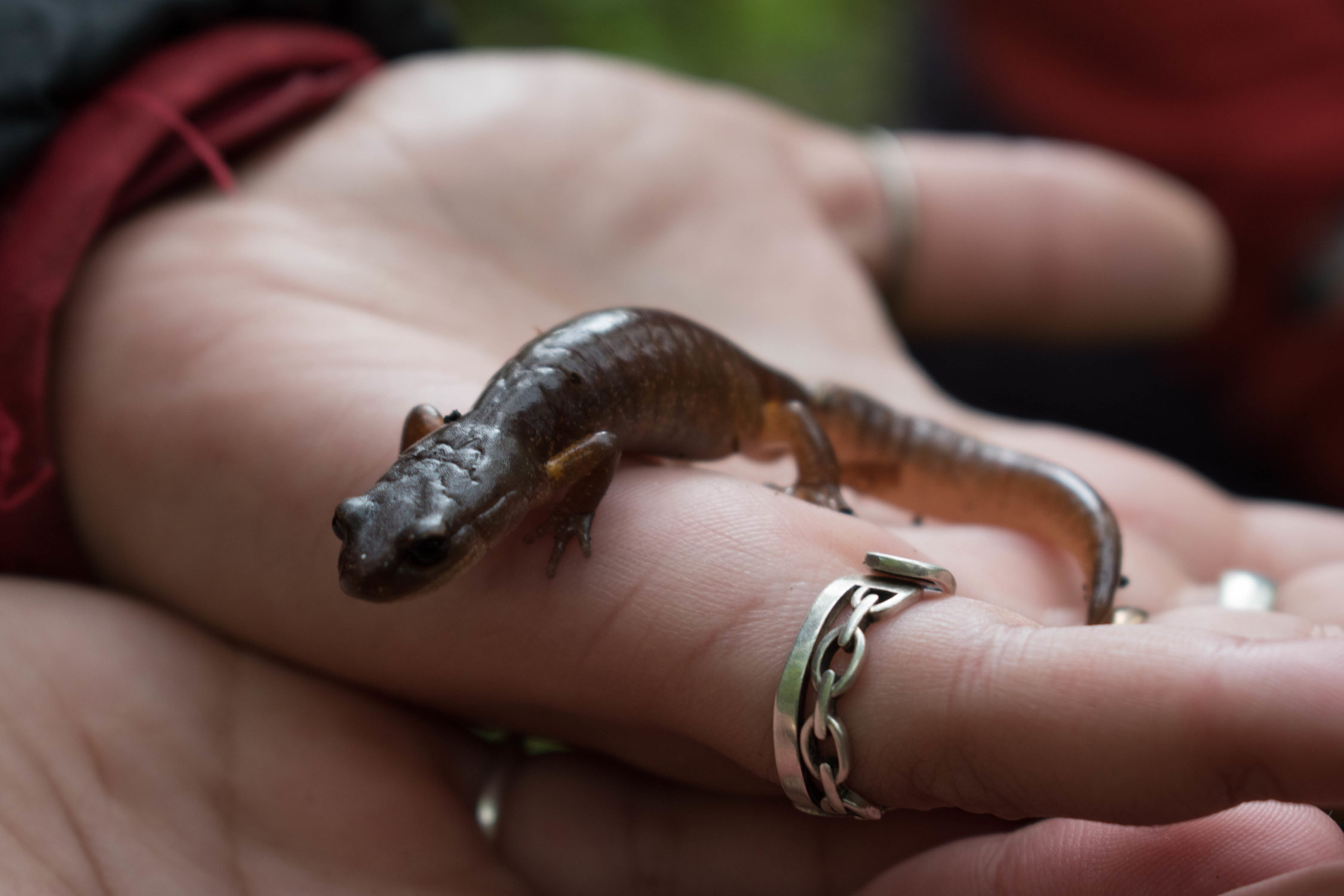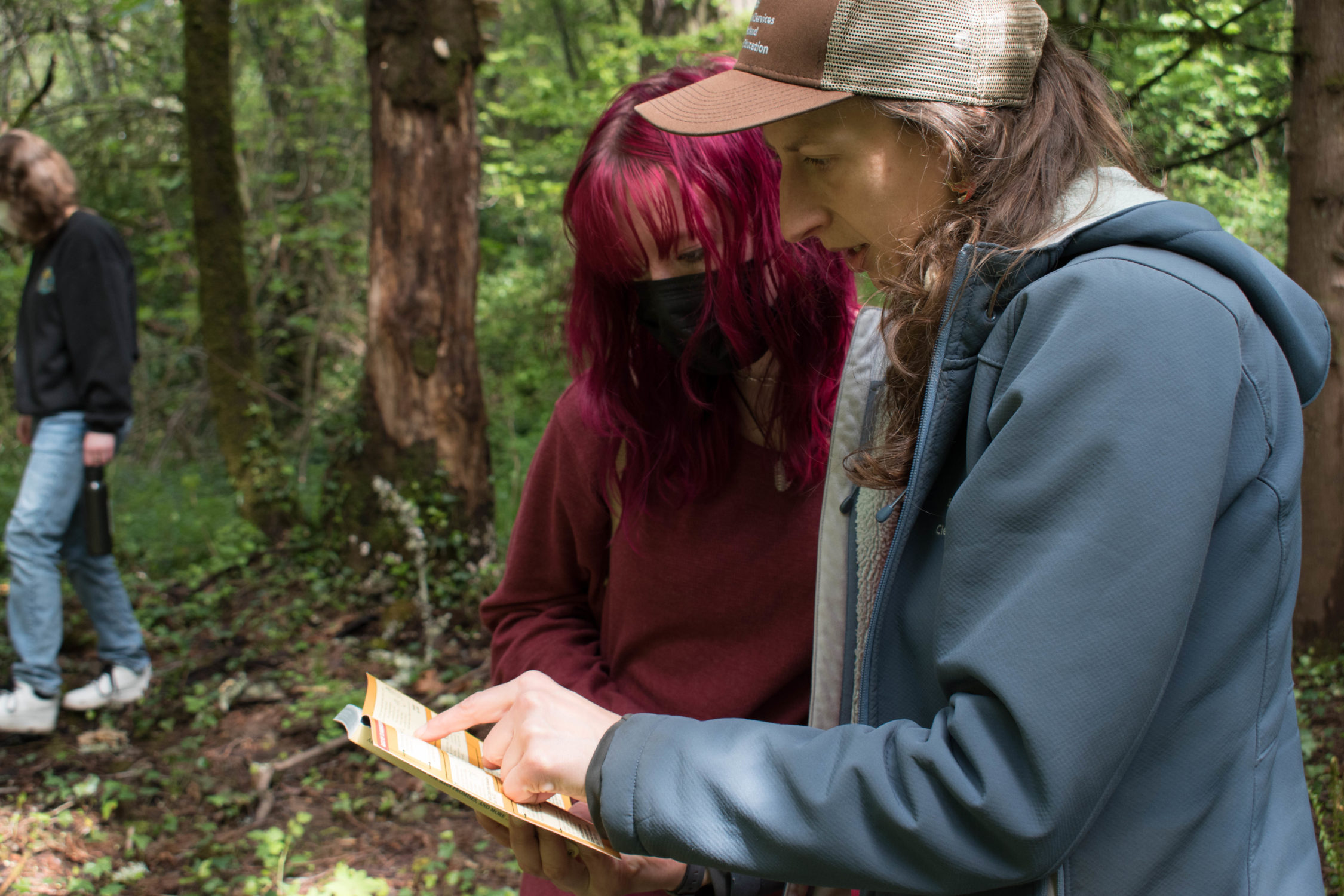David Douglas High School students take up the City Nature Challenge
It’s said that you should always stop and smell the roses, but sometimes spending time in nature is all about speed. That’s the idea behind a bioblitz–a community science campaign that tries to record as many plants, animals, and fungi as possible in just a few hours or days. Last Friday, forty students from David Douglas High School joined educators from the Johnson Creek Watershed Council, Portland Parks and Recreation, and the Portland Bureau of Environmental Services at the Leach Botanical Garden to participate in the largest bioblitz on the planet.
Students from David Douglas High School’s Natural Resources class and Sustainability class have been coming to the Garden for a long time. We wrote a previous blog post highlighting some of the activities they’ve completed as part of the Back 5 Project. Last week’s visit was special, though: it was specifically scheduled to line up the City Nature Challenge.
The City Nature Challenge was started in 2016 as a competitive bioblitz between Los Angeles and San Francisco. Since then, it has since expanded to document urban nature in hundreds of cities around the world. The Greater Portland-Vancouver Metro Area joined for the first time in 2021. Last year, almost a thousand different species were seen by five hundred community scientists who collectively made over six thousand observations of urban nature.

David Douglas students prepared for the Challenge by practicing with the iNaturalist app, which is used to record observations, on the grounds of their school. Once at the Garden, the students split into smaller groups and worked with educators to find and identify different species. Each observation a student made counted toward the Portland-Vancouver total–but more importantly, it helped document the fauna and flora of the Garden and taught the students an important lesson about the power of community science.
Over the course of one morning, students made over four hundred observations, documenting at least 184 different species. By the time they finished, they’d submitted so many observations that their contributions made up almost a third of all the observations for the day for the entire Portland-Vancouver area. Some of the most exciting discoveries included a giant house spider (Eratigena duellica) that truly lived up to its name, an ensatina salamander (Ensatina eschscholtzii), and cascara (Frangula purshiana).

Community science projects like bioblitzes and the City Nature Challenge provide crucial data scientists can use to document species’ status, understand the effects of climate change, and more. But perhaps more importantly, these projects get people outside, looking at nature, and having fun. So next time you stop to smell a wild rose, don’t forget to snap a photo for iNaturalist!

